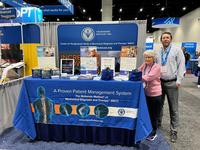News Room
Mechanical Diagnosis and Therapy® Keeps Runners Moving Forward
As more and more Americans take up fitness to combat the harmful side effects of sedentary desk jobs, running is as popular as it's ever been. More than 17.1 million runners finished road races last year, according to Running USA, and upwards of 40 million people in the U.S. are running at least two times a week for fitness.
Unfortunately, there is a high risk of injury. Some 60 percent of runners suffer an injury severe enough to affect training each year. A startling 90 percent of first-time marathoners will be sidelined during training. Physical therapist Allan Besselink, PT, DPT, Dip. MDT, has spent the better part of his career working to change that.
"The literature has been pretty clear as to what causes injury”, Besselink says, noting that running injuries have been studied for about 50 years. There are numerous commonly held myths about the causes of running injuries that don't match up with decades of sports science research: muscle imbalances, wrong shoes, faulty foot structure and one leg longer than the other among them. The common prescription of core development or stretching regimens doesn't solve the musculoskeletal issues at the root of the problem, says Besselink.
“We have chosen not to change the paradigm,” Besselink notes. “But, there is obviously a huge market."
Besselink estimates runners and triathletes spend about $28.8 billion in medical expenses each year, a number he projects as high as $37.2 billion based on available data. It doesn't offer much incentive for health care providers to find permanent (or at least better) solutions.
Treating runners has become a centerpiece for his Austin, Texas, practice, where the difference-maker has been the McKenzie Method® of Mechanical Diagnosis and Therapy (MDT). The McKenzie Method puts emphasis on movement as part of evaluation, diagnosis, prognosis, intervention and plans of care.
"MDT clinicians know how the injury responds to movement. I know how the problem behaves," Besselink says. "More often than not, based on the scientific research, the problem is training-related and if it's training-related, it's movement-related. If it's movement-related, I have the perfect tool for that."
The evidence-based MDT system begins with a thorough mechanical evaluation to establish a "cause-and-effect" relationship between historical pain behavior as well as the response to repeated test movements, positions and activities.
A systematic progression of applied mechanical forces utilizes pain response to monitor changes in motion and function to classify the disorder. Clinicians then develop a treatment program that empowers patients to treat themselves when possible.
"It fits well with the athletic population," Besselink says. "It's amazing how they naturally fall into that method. The sports medicine community is more exercise-oriented, so the application of exercise in treatment isn't very different from their existing lifestyle."
The patient-centered approach gets recreational athletes back on the track or outside quickly – typically four or five visits in total. Because athletic patients are so inclined to do the recommended exercises, they tend to feel immediate results. In fact, sometimes only a follow-up phone call is necessary.
Besselink used his more than two decades of experience coaching and treating runners to author the book RunSmart: A Comprehensive Approach to Injury-Free Running, which outlines training techniques as well as the integration of the McKenzie Method philosophy.
"When can I get back to training - that's the conversation every athlete loves to have," Besselink says.
Because of the confidence that the problem is fixed with MDT, it's a frequent dialogue between Besselink and his patients.
Share your news! Send your story to us and we'll post it for everyone to read.




